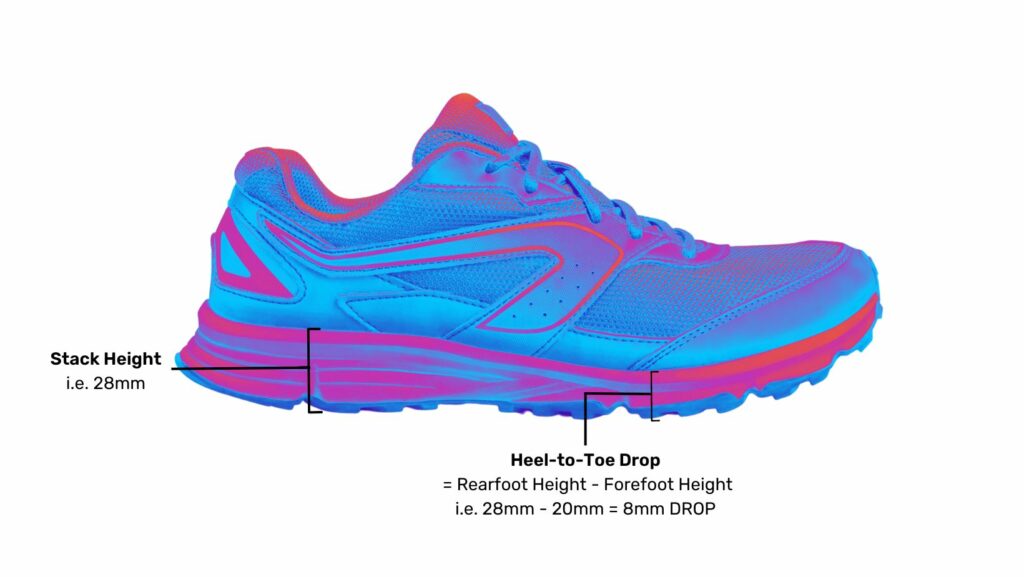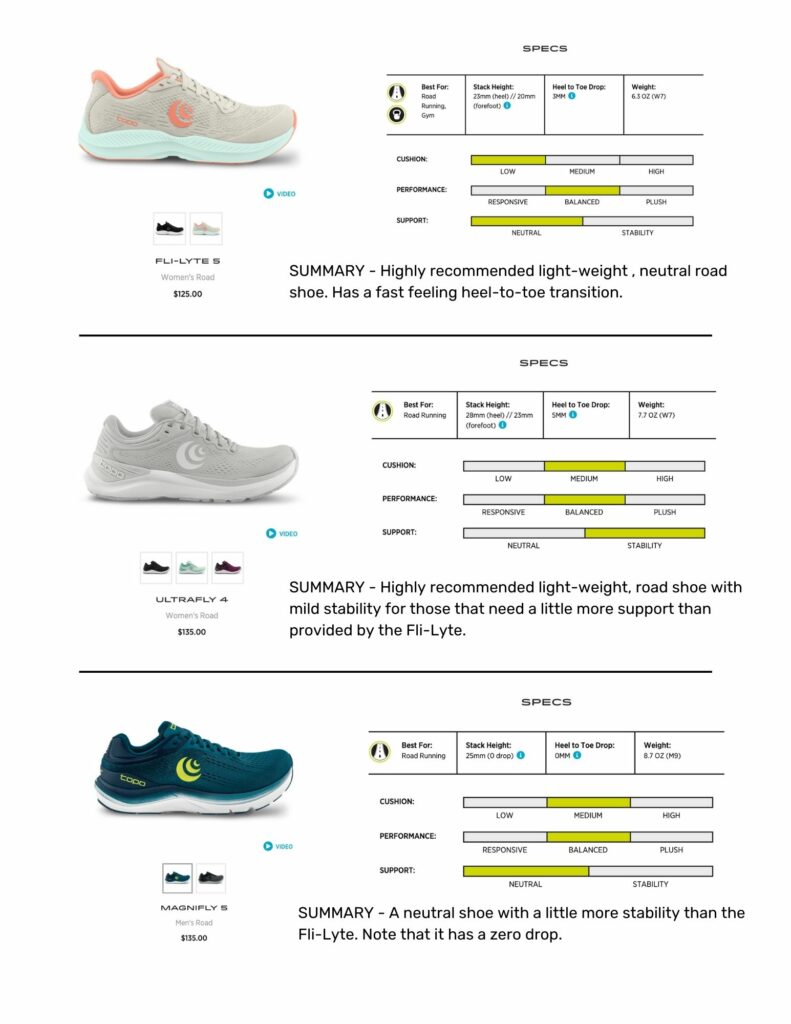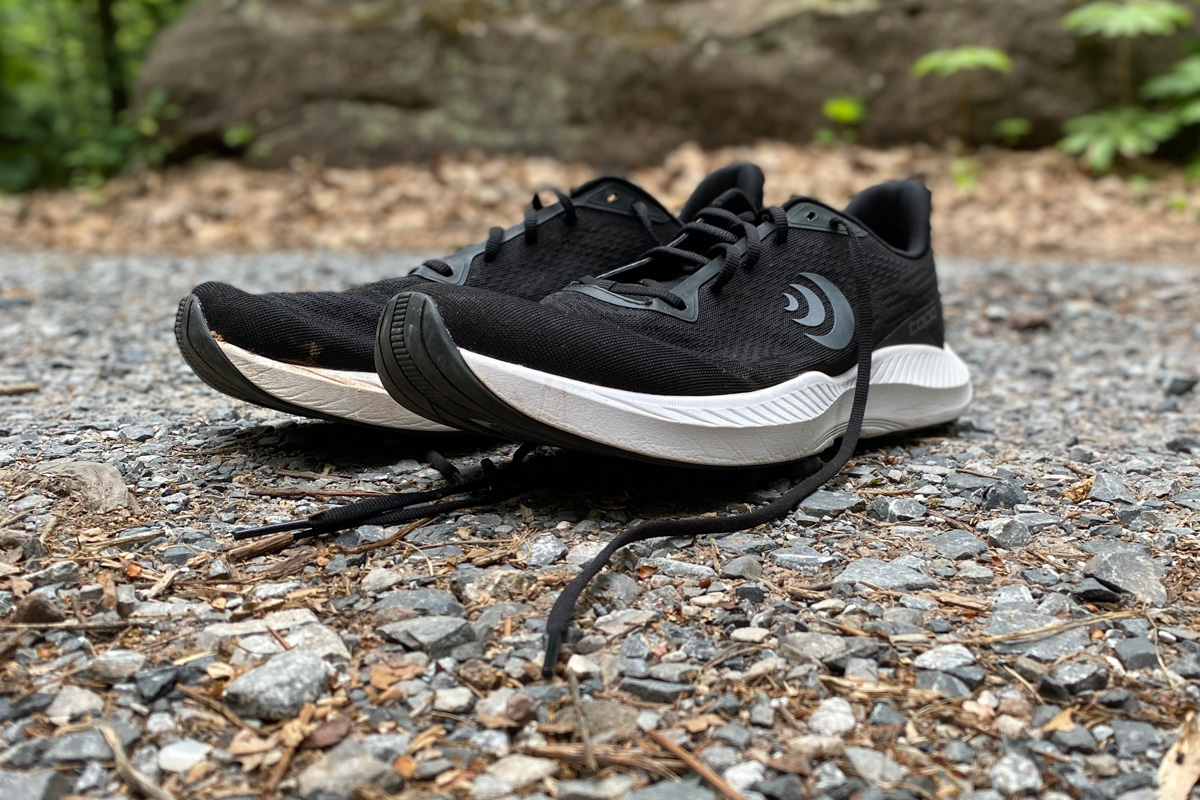When choosing running shoes, I know Doug and I share the same sentiments. It’s tough to find a pair that is just right.
I had found great success in the category of running shoes known as “lightweight trainers.” These were the type of low-profile shoes used for fast training or long-distance racing, but I liked them for all my running. The closer my feet are to the ground while still having some moderate support, the better. If the shoes were too low, too high, too squishy, too firm…you get it, I would get injured.
Nearly everything stocked on the running store shelves these days does not work for me. So when New Balance discontinued their 1500s 😭, I was on the hunt again for the perfect pair of shoes.
But before I reveal that shoe, let’s talk about running shoe anatomy and the research behind running shoes so you know what I was looking for and why.
The Research – What Shoes Are Best
Research shows that the best pair of shoes is the one that feels best for you. It seems simple, but I believe that the research outcome comes from the fact that there are so many variables to shoes that your best bet is to find one that is comfortable and feels right to you.
Research also supports running in lightweight shoes that don’t change your form.
Through years of experience working with runners and analyzing gait through the Helix 3D Gait Analysis, one running shoe variable impacts running form more than most. Stack height and/or cushion have been shown to decrease peak knee flexion during mid-stance. This decreased peak knee flexion means the joints absorb more force when wearing a high stack-height/cushion shoe. Most people transition to cushion shoes when they are in pain and feel like adding more cushion to their shoes will help. However, we see increased injury rates in people transitioning to cushion shoes.
Here, you can refer to my write-up about cushion shoes if you want to learn more about how overly cushioned shoes can affect your form.
The Anatomy of a Shoe
There is much we can talk about regarding the anatomy of a shoe. Shoes come in different shapes, have different foam densities, vary in torsional stability, etc. Because research supports simply finding a lightweight and comfortable shoe that doesn’t change your running form too much, we will highlight the primary variables of shoes that we know are affecting running form and injury risk.
- Stack Height – Stack height is the overall height of the shoe. There is a trend toward high stack height in the current market. Once again, there are many cases where we see higher stack height leading to increased impact forces through the joint. This is not always the case. For some runners, this might be the best option.
- Heel-Toe Drop – Drop is the difference in height between the rearfoot and forefoot height of the shoe. Altra was one of the first brands to popularize the zero-drop shoe. Traditional shoes typically have around 10-12mm drop. Ankle mobility and foot structure are important factors to consider when choosing drop height.
- Foam Type/Mid-Sole – There are a lot of variables when it comes to foam types and mid-sole structure. There are cushioned but responsive shoes, shoes with carbon mid-soles, shoes with foam designed for stability, etc. Again, research shows that the shoe type that is most comfortable is probably what works for you. We also make suggestions based on foot type, mobility limitations, and mechanics.
- Toe Box – Few shoe brands have moved toward a wide toe box to allow for proper toe splay and foot mechanics. If you have followed along with me, you know I am a fan of this!

Our favorite shoes
Doug and I have both found our way to Topo Athletic in the past few years. Both of us run in the Topo Fli-Lyte, and we each have a pair of Topo trail runners.
My path toward Topo started when I couldn’t find any shoes on store shelves with the lower stack height I have always had success with. As I said above, I am more injury-prone when I wear shoes with high stack height or too much cushion. It also puts me at high risk of turning my ankles, which I have a history of. I prefer being lower to the ground, so I get more of a feel of the ground and can respond to changing surfaces more efficiently.
The bonus is that Topo has a wide-toe box. Unlike other brands with wide-toe boxes, they also have a variety of heel-toe drop heights available. Altra, for example, only made zero drop shoes up until recently. Topo ranges from about 0-5mm, allowing an easier transition from traditional running shoes toward a shoe that encourages more natural mechanics.
Topo also uses a traditional foam, differing from many companies that are using new foams for enhanced cushion and “bounce.”
Doug likes both the foam and minimal heel-toe drop because “it preserves more natural mechanics while still providing the protection for longer and faster runs. It has the best of both worlds!”
We have recommended Topo to many runners after a thorough evaluation and gait analysis shows us that they could benefit from a change in shoe-wear. Simply put, it has been a great solution for our injured clients, and we hear only positive feedback.
Our favorites among the Topo shoes are the Fli-Lyte, Magnifly, and Ultrafly. See below for the specific shoe specs for each of these shoes.

Where can I get topo Shoes?
We recently started carrying a limited number of Topo shoes because we were recommending them so much, and there is nowhere nearby to try them on. While this is a bit of a plug for our new inventory, trust us when we say we would recommend these shoes whether we carried them or not. We love offering a place to try them on and ensuring you get the correct size. If you want to check them out online, head to their website!

